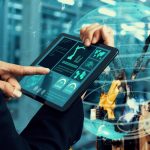Unlocking Value in IIoT Data 2022
The Industrial Internet of Things (IIoT) is quickly transforming the way we collect, analyze, and act on data from pieces of equipment and facilities across multiple industries.
Data collection data from machinery and the environment they exist in continues to evolve as companies innovate in and develop unique platforms to facilitate this process. IIoT data is now being used for real time monitoring, preventative maintenance, and is also mined for insights into efficiency and process improvements.
Beyond the above use cases there are other ways businesses can harness data as they innovate and evolve. The details below explore three additional ways to harness data, specifically when it is combined with 3D digital twins. While this approach is very new and further applications will continue to emerge, the examples below are already being put to use and easily implemented with today’s technology.
Remote Collaboration and Maintenance
Cutting down on travel time has obvious benefits as it relates to cost reduction, environmental impact, and safety. 3D digital twins, combined with sensor and other data, facilitates remote collaboration allowing for real-time, virtual diagnosis and maintenance of issues without an on site visit. More about The Benefits of Using the Digital Twin in Manufacturing
To facilitate, the model is stored in the cloud and combined with other data as it is collected and everyone who logs in to the dashboard sees 3D visuals of the equipment. In a maintenance scenario, the model can be shared between on-site staff and remote experts. As changes happen, they can be viewed in real time and additional features such as live picture in picture video and voice communication can be enabled. The on site staff may also view the model using a suitable AR headset if necessary and to keep their hands free.
A user on one end and in front of the dashboard can direct the person on the end who is with the equipment on any specific adjustments that need to be made. In some cases, dashboards can also be equipped with remote tools to help the off-site user make changes or adjustments to equipment sans an expert on the other end.
Improving Efficiency
Accurate indoor tracking of people and equipment is now available using a number of techniques. WiFi signals can be used with existing access points to get the location of anyone connected with 10-15ft. If greater accuracy is required, bluetooth beacons can be installed to locate any active bluetooth signals to within 2ft or so. Multiple cameras that can triangulate people in the field of view using a suitable reflector can also be used.
However, the best accuracy is obtained by using low cost Ultra Wide Band (UWB) RF tags, combined with UWB beacons. UWB has uses less power, is always on, and can penetrate internal walls and partitions with minimum reflections. The accuracy is outstanding and can locate people and objects to about 1-2cm accuracy. There are a number of ways indoor positioning data can be used. It can be gathered and recorded over time, and the results displayed on a 3D model to show a ‘heat map’ of where people congregate during the day. It can also show people and goods operate on a production line. The former is great for building operation planning, the latter is effectively a time and motion study. Both can lead to improved efficiency and cost effectiveness.
Securing Hazardous Environments
Knowing where people are in a facility to a degree of accuracy can have a dramatic impact on safety as well as insurance and regulatory costs. An alert can be generated if someone enters an area that is dangerous or otherwise off limits. It’s also possible to detect if someone has stumbled, fallen or been impacted by an object. An SOS button can be affixed to wearable technology or somewhere in a room allowing help to be immediately dispatched to a known location. Gas detectors are another use case and can be added to wearable units to detect exposure to hazardous environments. All of the above allows for safety improvements, a reduction in insurance costs, and minimizing OSHA regulatory overhead.
Data over time can be recorded, allowing for reports to be generated around specific events. That data can tell who was where, what activity they were engaged in, how they interacted with the environment, etc. And all of these things can be shown in a 3D photorealistic model.
3D technology combined with indoor positioning and other wearable sensors can have a dramatic impact on many industries; cutting costs, improving safety and ultimately reducing the operations carbon footprint.
About the Author
 This article was written by John Burton, the CEO and co-founder of UrsaLeo. Before founding UrsaLeo, John spent 30 years in the semiconductor industry working with industrial customers across Europe, North America and Japan. Seeing the vast quantities of data being gathered in IIoT environments he got together with Angie Sticher (ex-Apple) to find ways to better visualize and use that data. Hence UrsaLeo.
This article was written by John Burton, the CEO and co-founder of UrsaLeo. Before founding UrsaLeo, John spent 30 years in the semiconductor industry working with industrial customers across Europe, North America and Japan. Seeing the vast quantities of data being gathered in IIoT environments he got together with Angie Sticher (ex-Apple) to find ways to better visualize and use that data. Hence UrsaLeo.



